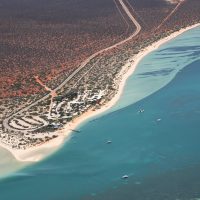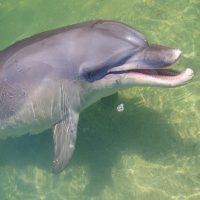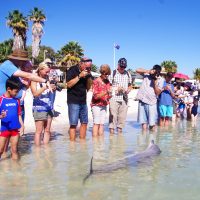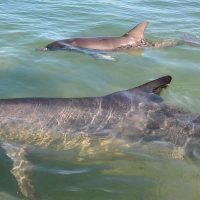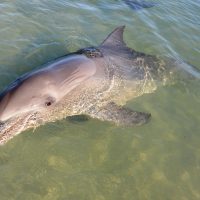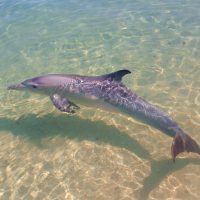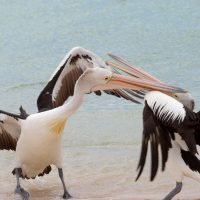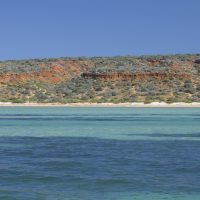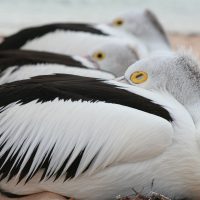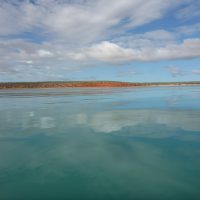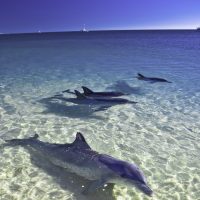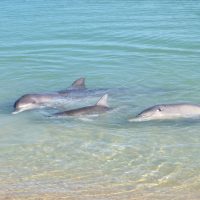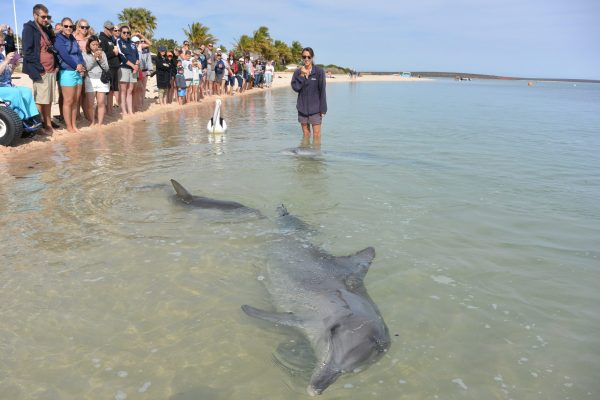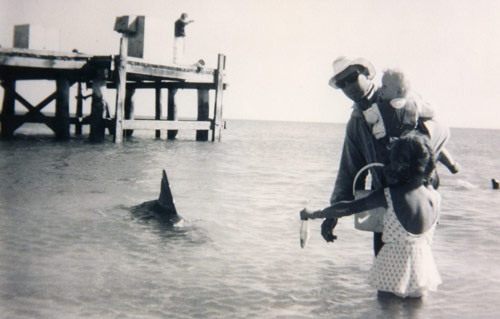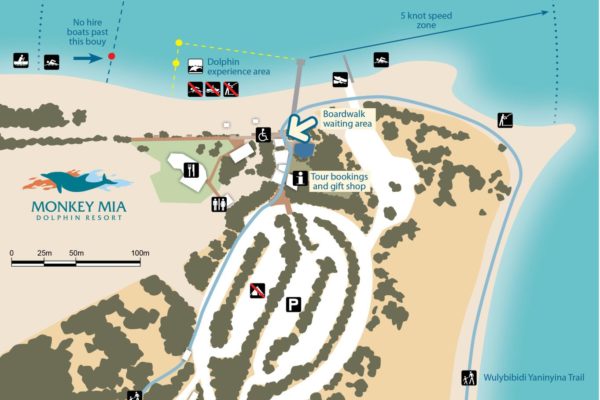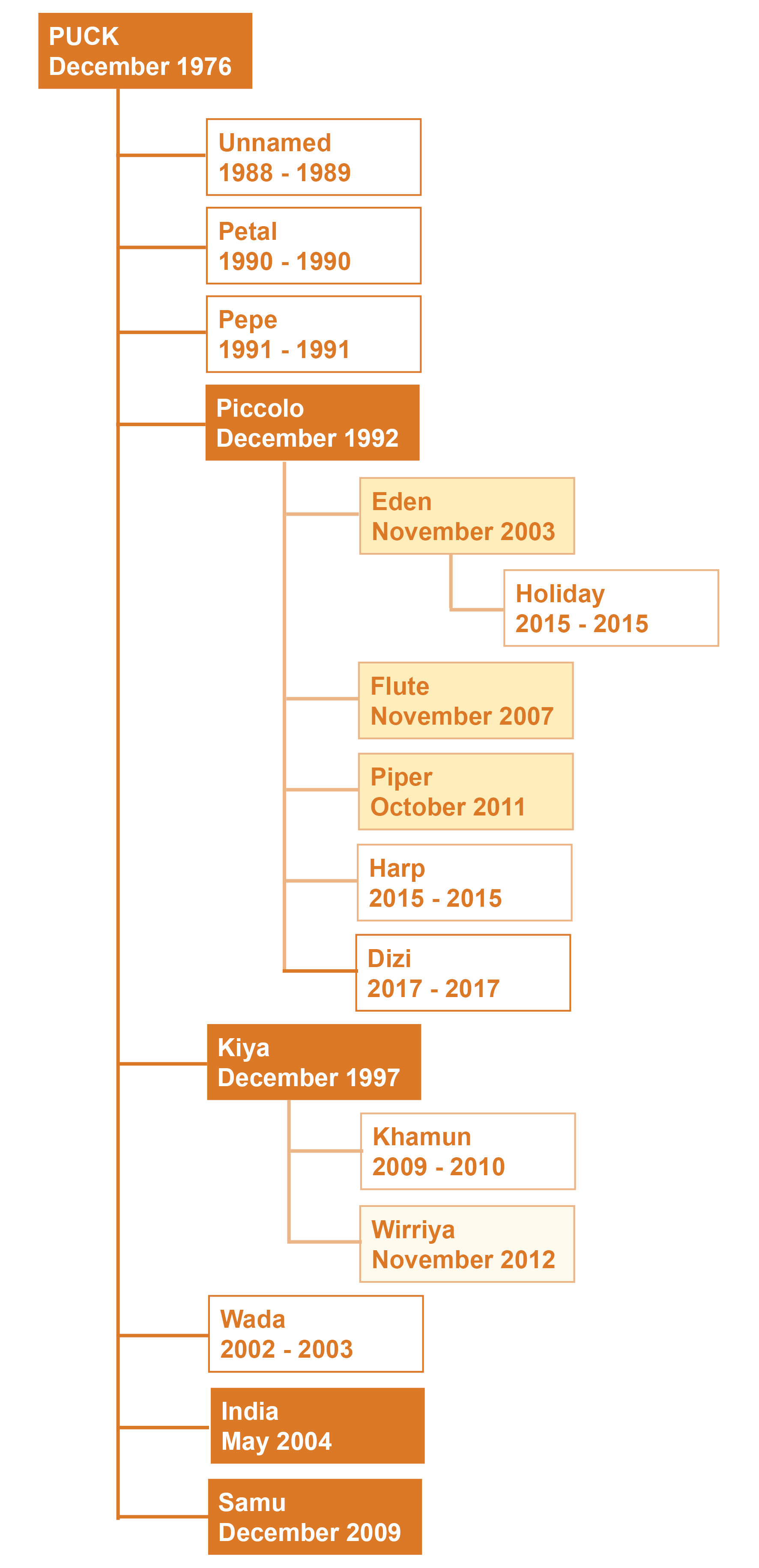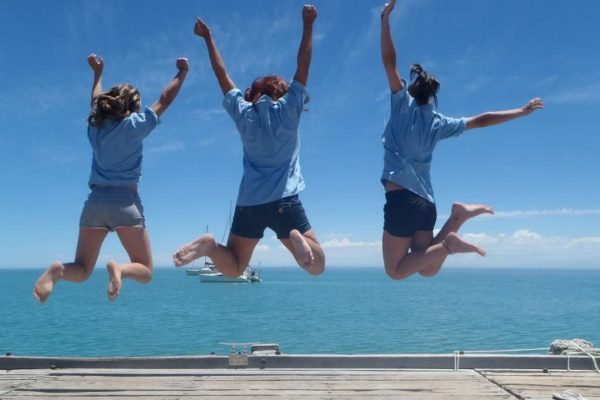Monkey Mia
Apart from dolphins you may see dugongs, sharks, rays, turtles and a variety of fish in the water. Beside the water you are likely to meet pelicans and emus. Western grasswrens are often seen near the carpark.
While at Monkey Mia, step away from the water to explore the area’s natural and cultural history along the Wulyibidi Yaninyina trail, a 1.5 km loop walk over dunes and along the beach. The walk is best done when the birds are most active just after sunrise or late in the afternoon.
Entry fees apply – see the fees and bookings page for details.
Like the Monkey Mia dolphin experience Facebook page to keep up with what’s happening at Monkey Mia, and see below for more information about the dolphins and the experience.
Access
The road to Monkey Mia is sealed and suitable for caravans. It is on the eastern coast of Peron Peninsula, 24km from Denham. There are regular flights from Perth to Shark Bay Airport, a ten minute drive from either Monkey Mia or Denham. Monkey Mia Resort has most of the facilities and services you are likely to need.
Visit the Discovery Centre to find out about commercial accommodation and to make bookings. You can also book in person at Monkey Mia.
For more than 50 years, large groups of wild Indo-Pacific bottlenose dolphins have visited the shallows at Monkey Mia. This encounter is one of the world’s great wildlife experiences and attracts more than 100,000 visitors a year.
Today dolphins are only fed according to strict guidelines and under supervision of Parks and Wildlife Service officers to ensure the dolphins continue to hunt and behave naturally. Outside this experience it is illegal to approach within 50 metres of a dolphin in the water. If a dolphin comes within 50m of where you’re swimming please exit the water. If you’re on the beach and a dolphin approaches in the shallows, please remain on the sand.
Times for the dolphin experiences depend on if and when the dolphins visit the beach. While they are only offered fish during their first three visits between 7:45 am and 12 noon, they often visit the beach outside these times.
Only a select group of mature females are offered fish. If they visit more than three times or after 12 noon they will not be fed. It is best to arrive early as dolphin experiences may finish well before noon. Although rare, there are days when the dolphins do not visit the beach.
To enjoy the Monkey Mia dolphin experience:
- Please meet the rangers on the boardwalk for a briefing at 7:45am.
- Remain on the boardwalk until rangers invite you onto the beach.
- If you are chosen to feed a dolphin, please do not touch the dolphin.
- For the well-being of the dolphins, please follow instructions at all times.
If there is an elevated risk to the welfare of the dolphins at any time, for example when newborn calves are present, then dolphin feeding may be restricted to Parks and Wildlife Service staff and volunteers. We appreciate your understanding during these circumstances.
Instructions and regulations for dolphin experiences are based on research done at Monkey Mia. Researchers have been studying dolphin behaviour, ecology, genetics, development, communication, social structure, predators and prey. Find out more about this research at Dolphins of Monkey Mia Research Foundation.
The Dolphin Experience Area
The Monkey Mia Recreation Zone extends in an 800 metre radius around the end of the Monkey Mia jetty. The dolphin experience area is within that zone and is the only place where dolphins are fed.
Boating, swimming and fishing are prohibited in the dolphin experience area. This allows the dolphins to visit without disturbance and enables and Parks and Wildlife Service rangers to monitor the dolphins’ health.
Spearfishing, netting, water skiing and jet skiing are prohibited in the Monkey Mia Recreation Zone for the safety and well-being of the dolphins. Line fishing is not permitted in the dolphin experience area but is allowed in other parts of the recreation zone.
Regulating Boat Encounters
Boat tours from Monkey Mia are subject to strict environmental regulations to ensure minimal impacts on marine animals and ensure the tourism industry remains sustainable. Regulations are necessary as boats can impact dolphin behaviour by:
- causing dolphins to change travelling directions and speeds
- splitting up dolphin groups
- increasing in the number of times dolphins surface for air
- boat noises interfering with dolphin communications
Dolphins that spend considerable time and energy avoiding boats may leave their preferred hunting, breeding and resting places.
In the 1960s fishers returning to Monkey Mia began sharing their catch with some of the dolphins. Over the years trust grew with more dolphins being fed at the jetty and later the beach.
Researchers arrived and have been continuously studying the dolphins since 1984. Among the researchers’ findings was that the mortality rate among the calves of beach visiting dolphins was significantly higher than that of other dolphins in Shark Bay. This led to the development of guidelines to ensure the young of beach visiting dolphins were raised with as much chance of survival as other wild dolphins.
The Parks and Wildlife Service manages the Monkey Mia dolphin experience according to these guidelines by regulating dolphin feeding, maintaining the dolphin experience area, careful recruitment of new dolphins, and regulating boat encounters.
Regulating Dolphin Feeding
Between 1987 and 1994, 92% (11 of 12) nursing calves born to hand-fed females died. The high mortality rate was attributed to a combination of overfeeding, indiscriminate feeding and dolphins spending too much time at the beach rather than caring for their calves. Regulations were introduced to address this:
- Only mature females with good survival skills are fed.
- Males are not fed because they tend to be more aggressive.
- The dolphins are never fed more than a third of their daily food requirements – they still have to hunt for most of their food.
- Only fresh local fish hunted by dolphins in the wild are given to them. This is to prevent dolphins from developing preferences for ‘foreign’ foods.
- To encourage the dolphins to spend more time doing their normal activities, feeding only takes place in the morning.
- There are no set feeding times so the dolphins do not become conditioned and alter their natural wild behaviour.
- To avoid stress during feeding the dolphins must not be touched and the fish must be readily available when they want to eat.
- People are not allowed to feed dolphins from boats, the jetty or the shore. It is illegal to feed dolphins and other wildlife without authorisation anywhere in Western Australia.
Since these regulations were introduced in 1995 only 23% (3 of 13) of calves born to provisioned females have died.
Recruitment of New Dolphins
Two dolphins are in the feeding program. 2016 was the first time in 11 years a new dolphin was introduced into the program. Kiya had been going to the beach since she was born in 1997 but was only introduced to the feeding program when one of the old dolphins died.
More than 2,000 dolphins inhabit Shark Bay and about 300 live in the waters around Monkey Mia. The dolphins at Monkey Mia are Indo-Pacific bottlenose dolphins, a sub-species of the common bottlenose dolphin.
Due to strict management regulations for the ongoing welfare of the dolphins only five adult females are fed at Monkey Mia. They can be identified by their dorsal fins and following is a little bit about each of them.
You can read more about the lives of Monkey Mia’s dolphins at the Dolphins of Monkey Mia Research Foundation.
Below are the family trees of the Monkey Mia beach visiting dolphins.
Puck
1976 – 2019
Daughter of Crookedfin

Puck was the daughter of Crookedfin, one of the original dolphins who began visiting the beach in the late 1970s. Puck was a regular visitor to the beach and well integrated into the larger community of female dolphins at Red Cliff Bay.
Members of Puck’s family have a close bond and spend most of their time socialising and foraging together. They are skilled at ‘rooster-tail’ foraging, a deep water technique that involves swimming fast and leaving a trail along the surface then backtracking and diving to catch their prey.
Puck birthed eight calves. Piccolo (06/12/1992) was Puck’s first calf to survive and now regularly visits the beach.
Puck’s next calf Kiya (13/12/1997) survived a shark attack in 1999. Puck’s other surviving calves are India (07/05/2004) and Samu (12/12/2009).
Most of the markings on Puck’s dorsal fin were the result of being entangled in fishing nets while chasing mullet in 1994.
Piccolo
Born 6 December 1992
Daughter of Puck

Piccolo is Puck’s fourth calf and was introduced to the beach program in 1999. Piccolo initially appeared more interested in offering the fish to the rangers than eating the fish herself. Piccolo still takes her time with food and will often show her fish to visitors before eventually swallowing it whole.
Piccolo’s first calf was Eden (20/11/2003) and her second calf, Flute (13/11/2007). Piccolo and Flute are sometimes seen in the afternoons foraging and chasing fish at impressive speeds along the shoreline at Monkey Mia. Dolphins can reach speeds of up to 40 km/hour when herding fish.
Genetic sampling has shown that Piccolo and Kiya have the same mother and father (Real Notch). Fathers do not associate with their offspring.
Piccolo’s fin has a 2cm-deep slit about 3cm below the tip and several other notches further down.
Kiya
Born 13 December 1997
Daughter of Puck
Sister of Piccolo
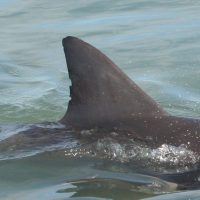
Kiya was introduced to the feeding program in 2016 but has been coming to the beach since she was born. She is the daughter of Puck and sister of Piccolo who are part of the dolphin experience program. Kiya had her first calf, Khamun (born 27/12/2009), when she was 12 years old.
Kiya’s movements at the beach had been recorded all her life and she was monitored extensively prior to being introduced to the feeding program. As a fully independent female with her own calf, Kiya’s survival skills were fully developed to the extent that it was considered safe to introduce her to the feeding program without risk to her health or that of her calf Wirriya (07/11/2012).
Surprise
1979 – 2019
Mother to Shadow, Shock,
Sparky, Burda, Shiver & Sonic
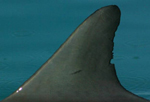
Surprise became a regular visitor to Monkey Mia in the late 1980s but did not accept fish until 1990. She was named for her tendency to suddenly appear at researchers’ boats for a bow ride. She also tended to appear unexpectedly during the morning interactions.
Surprise has birthed seven calves and four are still alive: Sparky (14/11/1998), Burda (21/01/2003), Shiver (30/11/2006) and Sonic (17/11/2010). The name ‘Sonic’ relates to a research project by Murdoch University and the University of Southern Denmark. Researchers use a hydrophone to record Sonic’s sound emissions to better understand how echolocation signals develop in young dolphins.
Surprise’s dorsal fin had a rounded tip and a few sharp notches midway down.
Shock
1994 – 2018
Daughter of Surprise

Shock was Surprise’s second calf and was introduced to the beach interaction program in 2006 when she was pregnant with her first calf. Like Surprise, Shock was sometimes an elusive dolphin, often preferring to remain at the back of the Dolphin Experience Area when visiting the beach.
Shock inherited Surprise’s impressive foraging skills – both were skilled at catching and eating flathead, a spiny fish common in the seagrass that few dolphins are able to catch and eat. Surprise and Shock spent a lot of time foraging in shallow waters on the flats northeast of Monkey Mia.
Shock’s dorsal fin had very few markings but could be identified by its arched shape.
Are you interested in dolphins? Would you like to spend four mornings getting to know a group of these marine mammals? Are you at least 16 years old?
If you answered yes to all three questions, consider volunteering at Monkey Mia.
Volunteers play an important role in helping to manage the Monkey Mia Reserve, the Monkey Mia visitor centre and the dolphin experience. They assist staff with the wildlife interaction and enhance the stay of visitors by providing information about the dolphins, Monkey Mia Reserve and the surrounding Shark Bay World Heritage Area.
As a volunteer you get to help with:
- Feeding dolphins
- Collecting dolphin data
- Looking after the beautiful beach front
- Helping rangers with other jobs
The hours are early but short – 7:00am to 12:00pm
Your entry to Monkey Mia will be free while volunteering and you will also be rewarded with the satisfaction of helping manage the Monkey Mia Reserve and dolphin experiences.
A good knowledge of spoken and written English is essential. The minimum amount of time you can volunteer is five days and the maximum is two weeks. Many people plan holidays around volunteering at Monkey Mia so it is important to book your dates in advance.
Talk to staff at the Monkey Mia shop, call us on (08) 9948 1366, or email monkeymiavolunteers@dbca.wa.gov.au

